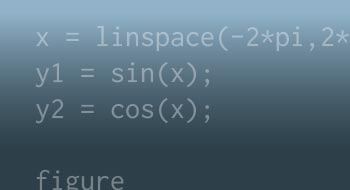What’s the Big deal?
So, whatisthe big deal? To start with, this week marks my 19th anniversary at MathWorks. Never would I have guessed back then what I am up to now, includingtalkingabout MATLAB with so many customers. I look forward to many more years working with MATLAB at MathWorks and meeting and working with so many wonderful customers.
In a recentpost on the MATLAB newsgroup, Duane Hanselman mentioned that he found something interesting in the help fordeal, namely the note:
In many instances, you can access the data in cell arrays and structure fields without using thedealfunction.and he went on to ask when this was introduced. To find the answer, I did some archaeology in the MATLAB Release Notes and found some information in the notes for Release 14, MATLAB 7.
Why did we introduce this? Here are some of our thoughts from our design discussions:
- Users either have to usedealor a loop to extract information from acellarrayor a field of astructarray.
- c{:}anda(:).fnboth produce comma-separated lists in MATLAB. Before this change, you could enclose these expressions in square brackets ([ ]), curly braces ({ }), or parentheses for a function call (foo( )). Otherwise, they produced as many outputs as the length of the array input, each successively assigned toans.
- 因为我们现在与一个com允许作业ma separated list on the right hand side where it was not possible before, we were not going to break working code.
- The idea seemed both natural and welcome when we spoke to some M programmers at MathWorks.
The biggest problem I see with this new construct is that it seems to have taken a while to get the exposure it deserves. While there is still clearly a role fordeal, it's required less often than before MATLAB 7.
One code pattern I have seendealused for is renaming variables. For example, you can swap the values ofAandBwith this:
[B,A] = deal(A,B);
With the use ofanonymous functionsyou can also accomplish the same outcome:
swap=@(varargin)varargin{nargin:-1:1};
Now let's see what that does:
a = 1; b = 2; c = 17; [a,b,c] = swap(a,b,c)
and the output looks like this:
a = 17 b = 2 c = 1
There will be more in future articles on function handles, anonymous functions and nested functions. I have received suggestions for article topics from several of you and would love to gather even more input. Please keep the feedback coming!
- Category:
- New Feature,
- Structures














 Cleve’s Corner: Cleve Moler on Mathematics and Computing
Cleve’s Corner: Cleve Moler on Mathematics and Computing The MATLAB Blog
The MATLAB Blog Steve on Image Processing with MATLAB
Steve on Image Processing with MATLAB Guy on Simulink
Guy on Simulink Deep Learning
Deep Learning Developer Zone
Developer Zone Stuart’s MATLAB Videos
Stuart’s MATLAB Videos Behind the Headlines
Behind the Headlines File Exchange Pick of the Week
File Exchange Pick of the Week Hans on IoT
Hans on IoT Student Lounge
Student Lounge MATLAB Community
MATLAB Community MATLAB ユーザーコミュニティー
MATLAB ユーザーコミュニティー Startups, Accelerators, & Entrepreneurs
Startups, Accelerators, & Entrepreneurs






